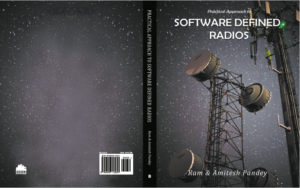Publisher: O’Reilly Media
If you’re tinkering with electronics and is something you’d really like to do – in theory at least – but the realities of time constraints, lack of knowledge and few rewards inevitably prevent us from making a start. It’s just too difficult. We would like dissecting broken gadgets, but never do anything with the bits we find other than stash them away.
The Arduino is the answer to all that, and frankly anything that can be considered fun while learning is a truly revolutionary device in my opinion.
Technically, the Arduino is a programmable logic controller or a little computer with which we can program to do things, and it interacts with the world through electronic sensors, lights, and motors. In essence, it makes some truly hardcore electronics projects accessible to anyone – so artists and creative types can concentrate on making their ideas a reality. It’s the ultimate tinkering tool.
It is an Open-Source electronics prototyping platform. So being an open source, it is freely available and its flexibility to interact with different components makes it a worthy tool.
If you would like to know to more about the Arduino, you can get yourself an Arduino Cook Book that serves a truly far reaching experience on how to use the Arduino from scratch and can get you even to a greater success with the tool.
About the Cook Book
With this cookbook you can dive right in and experiment with more than a hundred tips and techniques, no matter what your skill level is. The Second Edition of the Arduino Cookbook fixes any example code that may have been ‘broken’ by the release of Arduino 1.0.
The recipes in this book provide solutions for most common problems and questions Arduino users have, including everything from programming fundamentals to working with sensors, motors, lights, and sound, or communicating over wired and wireless networks. You’ll find the examples and advice you need to begin, expand, and enhance your projects right away.
- Get to know the Arduino development environment
- Understand the core elements of the Arduino programming language
- Use common output devices for light, motion, and sound
- Interact with almost any device that has a remote control
- Learn techniques for handling time delays and time measurement
- Use simple ways to transfer digital information from sensors to the Arduino device
- Create complex projects that incorporate shields and external modules
- Use and modify existing Arduino libraries, and learn how to create your own
If you want to buy the book, log onto
http://www.tenettech.com/product/424/arduino-cookbook-second-edition-bok-11170
If you have any queries, please can drop a mail to info@tenettech.com






